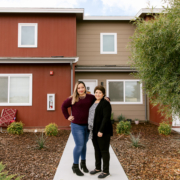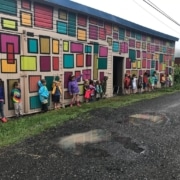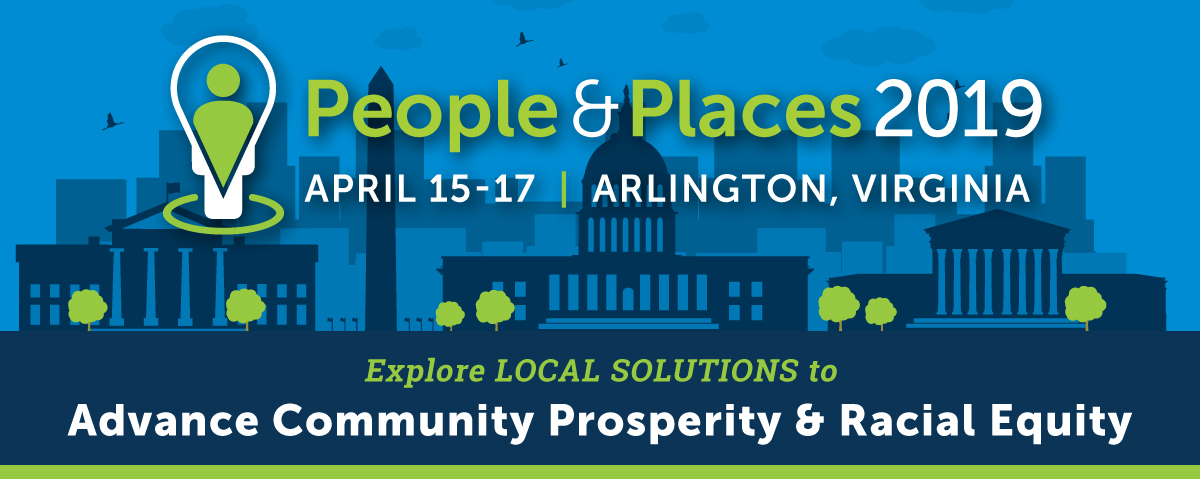by David Lipsetz
![Children in front of a mural - Photo: [bc]](https://Ruralhome.org/wp-content/uploads/storage/images/cird/bc_kids_mural.jpg)
The National Endowment for the Arts has selected the Housing Assistance Council (HAC) as its partner for the Citizens’ Institute on Rural Design (CIRD), one of the Arts Endowment’s leadership initiatives. As HAC’s CEO, I couldn’t be more excited.
CIRD‘s goal is to enhance the quality of life and economic viability of rural America through planning, design, and creative placemaking. It offers communities access to the resources they need to convert their own good ideas into reality. The program awards competitive funding to small towns and rural and tribal communities to host multi-day community design workshops. With support from a wide range of design, planning, and creative placemaking professionals, the workshops bring together residents and local leaders from non-profits, community organizations, and government to develop actionable solutions to the community’s pressing design challenges. Following the workshop, the community receives additional support through webinars, web-based resources, and customized follow-up support.

If you are familiar with CIRD, but haven’t worked with HAC before, you might be wondering why a housing organization was chosen. Let me tell you a bit about us and hopefully it becomes clear. HAC’s mission is to build homes and communities across rural America. We’ve been doing so for nearly 50 years and have worked with over 10,000 rural communities.
HAC is attuned to rural life. We appreciate that every small town is unique. We understand that projects succeed or fail on the strength of local leadership and engagement. We see our job as building the capacity of local organizations to thrive well after we are gone. We know housing, but in rural places you never have the luxury of working with only one of the tools of community development. You must be able to wear many hats, and over the years we’ve amassed quite a collection.
I’m eager to watch CIRD’s core mission carried out through HAC. I’m equally eager to watch the interaction—both locally and nationally—of rural housing and community development practitioners working alongside designers and planners. CIRD will maintain its competitive funding for small and tribal communities to host multi-day design workshops. We will leverage our 50-state reach and capacity building network to bring peer learning and design-rooted capacity building to an additional 20 communities, and couple it with support for navigating funding opportunities. In late May 2019, CIRD will release a Request for Applications, inviting communities to apply for the program. Join CIRD’s mailing list to stay abreast.
If you are reading this post, you probably already know of rural and tribal communities that are trendsetters in design and creative placemaking. They often want to continue turning their community-rooted design ideas into reality. They want steady funding streams, coupled with the know-how to access such. They want to exchange ideas and break bread with their rural peers, gaining hands-on exposure to best practices. And they want to engage with the country’s best designers, including architects, planners, and other experts with a rural bent. They need a repository for what works and connection to a national conversation, boosting their collective capacity. HAC has been creating such connections for decades, and the National Endowment for the Arts has given HAC the resources to build even more via CIRD.
buildingcommunityWORKSHOP (bc), a nonprofit community design organization, will join HAC as a key partner in carrying out CIRD. bc is known for engaging low-income communities with award winning design and planning. bc has earned the respect of local partners in Texas, the Rio Grande Valley, and beyond. Their expertise is a perfect complement to HAC’s reach and reputation for building local capacity.

The National Endowment for the Arts and HAC have committed to furthering CIRD’s reach because CIRD works. HAC hopes to spend a decade leading CIRD in close consultation with a CIRD Steering Committee comprised of rural design leaders. Behind the National Endowment for the Arts decision to select HAC is HAC’s success with a National Endowment for the Arts-funded creative placemaking award, HAC’s groundbreaking report on Placemaking in Native American Communities, and a growing consensus among policymakers, pundits, and most recently the National Governors Association that arts, placemaking, and design are drivers of rural economic development.
NEA’s support is also allowing HAC to host bc and several design fellows and other visitors at the intersection of rural and design to collaborate. Deliberate co-locating of top designers and planners with HAC’s expertise in rural policy and programs will deepen everyone’s understanding. The idea grew out of a bc-led session at HAC’s recent National Rural Housing conferences. HAC has an ear to the ground in rural America; merging such with bc’s design bona fides and a mutual respect for rural practitioners will bring about design rooted upshot for hundreds of small towns.
Finally, HAC will put CIRD’s track record and potential to work with philanthropy and other non-government actors. Ensuring quality rural design on a scale commensurate with the need for such requires investment from business and foundations. In boosting CIRD’s funding level to reach up to 20 additional communities, the National Endowment for the Arts signaled a commitment to rural design as a driver of rural prosperity—even in a competitive funding environment. Private and public support, including Community Reinvestment Act-motivated capital toward creative and design-focused endeavors is already producing results. We are looking for several more foundations and financial institutions to join our journey.
Way back in 1971, HAC’s founders called for “foster(ing) planning” and “citizen participation in housing and community benefit” on a national scale. They were prescient in outlining the importance of locally-driven planning and citizen participation. I’m glad that the National Endowment for the Arts is trusting HAC, via CIRD and with bcWORKSHOP, to take on work that our founders knew as important, then and now.





![Children in front of a mural - Photo: [bc]](https://Ruralhome.org/wp-content/uploads/storage/images/cird/bc_kids_mural.jpg)






 HAC’s
HAC’s